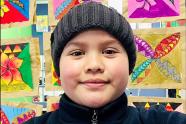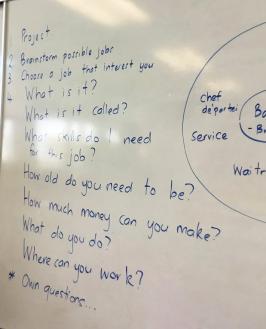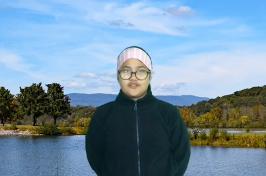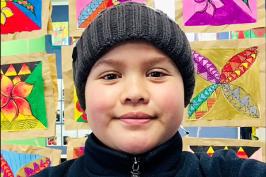Career videos – examples of digital outcomes
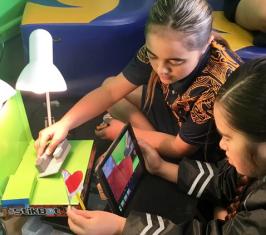
A student's interest in stop motion video extended to researching art careers.
Students extend interests into video creation

A student's interest in stop motion video extended to researching art careers.
Years 4–6 students from Richmond School completed projects on their own interests. They extended this work by creating videos about careers linked to their interests. This created an authentic, local curriculum context.
The students learnt about technological practice – brief development, planning for practice, and outcome and evaluation.
The school follows the philosophy of Longworth play-based education – students learning through play in the classroom.
Local curriculum in action
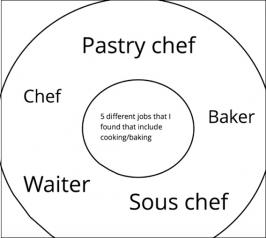 Building on current work
Building on current work

The students had chosen a wide range of interest projects including making books, making movies using claymation, creating a dream Minecraft world, and creating baked products and recipes.
To follow on from their interest projects, teacher Matariki suggested to the students to explore occupations linked to their interest projects.
The students would share what they learnt as a video to develop their skills in designing and developing digital outcomes as well as building understanding of possible future careers.
What contributed to success here
Building on the students’ interests and their own projects was an effective introduction to explore career possibilities.
This is an example of local curriculum in action – learning is personalised and inclusive to take into account the students' aspirations, interests, identity, language, and culture.
Creating videos was possible because the students had collected digital evidence during their interest projects.
The students went on a trip and completed workshops with MTG Hawke’s Bay Tai Ahuriri in Napier via the Raranga Matihiko project and Te Papa. These experiences made the students excited about the possibilities provided by digital technologies.
Question to consider
How will a programme of learning around designing and developing digital outcomes be responsive to the needs, identity, language, culture, interests, strengths, and aspirations of students and their whānau?
See the local curriculum guide series for more ideas.
Making videos within the framework of technological practice
Brief development
The students carried out initial research on what they could include in their career video. Teacher Matariki worked with the students to discuss what was involved in making a successful, engaging video for the purpose of their classmates (end-users) being informed about future careers.
The class worked with Matariki to develop a list of attributes for their video brief. The class constructed brief became: Create a video to share with the class about jobs that may interest you and your classmates that are related to your interest project. The video shows answers to an agreed set of questions.
Brief development was an iterative process throughout their technological practice.
Other brief attributes added were:
- the video should look professional and be engaging for your classmates
- the video should be planned before you start making
- the presentation could be made using Clips, iMovie, or Keynote applications
- the students should speak with expression and fluency
- background music must be included
- the video could be a maximum length of 1.30 mins
- questions or key words should be written rather than a script for everything said in the video
- filters or emojis maybe added to the video clip
- all images, music, and sounds in the video must be free to use, not infringe copyright or privacy, be culturally acceptable, and show safe practices.
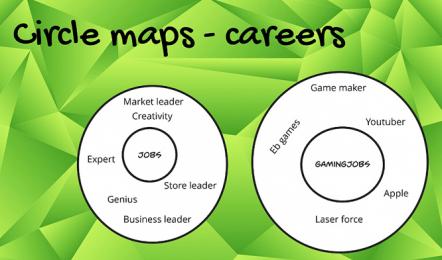
Teacher Matariki, encouraged broad thinking on careers related to the students' interests.
Planning for practice
The students were encouraged to think broadly and create a brainstorm about careers that could have a link to their interest project.
The students used the video questions to help their research. They were required to present their research and their script before they began filming. Guidance was provided on accurate research. Careers NZ was used for researching salaries of various occupations.
Students developed knowledge of images that they could use and not infringe copyright. They learnt to read and understand copyright notes that were provided with images. The students used the standard clips on iMovie and sourced royalty free images from sites like:
The students created original music using GarageBand software or used royalty free music in iMovie.
Outcome development and evaluation
Students were encouraged to generate their own ideas for their video content.
Exploring the different applications, the students found iMovie had the features they needed for the task. As their project progressed they became proficient users of the application – both learning from each other and their teacher. They worked in pairs to film their videos.
The students evaluated their outcome against their class's developed brief. They asked the audience of their classmates, to carry out plus, minus, and interesting (PMI) feedback on their videos. The students used the feedback to see if their videos met the brief for being engaging and where they could improve for their next video-making ventures.
What contributed to success here?
Following the design process outlined by Matariki helped ensure students successfully completed their videos. The students could begin to identify what the key stages were in making a video, track their progress, and knew when to check in with their teacher.
There is a strong focus in this classroom on learning journeys and the key competency managing self. The students are familiar with the language and actions of making plans and choices, identifying next steps of their learning journeys, setting goals, and meeting challenges. This helped the students with their outcome development.
Questions to consider
- What design process will your students use to learn about technological practice?
- If looking at careers how will you encourage broad brainstorming of options?
- How will you balance guiding brief development and including student input?
- What key competencies will you prioritise in your technological practice programme of learning?
- How will you assist understanding on copyright and digital citizenship in video making?
Watch this video about copyright from Kia Takatū ā-Matihiko | digital readiness
Copyright and creative commons considerations
Learn more about copyright on the TKI site Enabling e-learning.
Incorporating progress outcomes for designing and developing digital outcomes
Progress outcomes
Through making the videos the students’ skills developed from progress outcome 1 to progress outcome 2 in designing and developing digital outcomes. The students progressed on from teacher-led activities. They began making their own decisions about creating, manipulating, storing, retrieving, sharing, and testing digital content for a specific purpose, given particular parameters, tools, and techniques.
The students selected from an increasing range of applications and file types – sound, image, and video files. They developed their videos for a purpose. The purpose was sharing careers of interest with their class members.
Examples of the videos created
Rangi's video on careers in leadership
Tazette's video on cooking careers
What contributed to success here?
The technology learning area was embedded within an authentic context in the designing and developing digital outcomes technological area.
The students built on their knowledge from the interest projects to use an increasing range of applications and file types.
The digital outcome was developed for an authentic purpose.
Questions to consider
- What authentic context can your students use to design and develop digital outcomes?
- How will the programme of learning develop so the students can select from an increasing range of applications and file types to develop outcomes for a particular purpose?
Next steps in designing and developing digital outcomes
Teaching within the technology strands
Nature of technology
Future teaching and learning could include a focus on the characteristics of technology component in the nature of technology strand. This is the focus for the following statements in the designing and developing digital outcomes progress outcomes:
- In progress outcome 1 – they [students] identify digital devices and their purposes and understand that humans make them.
- In progress outcome 2 – they [students] understand that digital devices impact on humans and society and that both the devices and their impact change over time.
The emphasis in the nature of technology strand is on knowing why. Students come to understand technology as an intervening force in the world and learn that technological developments are inevitably influenced by (and influence) historical, social, and cultural events. See characteristics of technology.
Technological knowledge
The technological systems component is part of the technological knowledge strand. In the technological knowledge strand the emphasis is on knowing what. A focus on the technological systems component builds students' understanding in the concepts of inputs, outputs, transformation, and control. See technological systems.
Teaching and learning with a focus on this component gives students access to the following statements in the designing and developing digital outcomes progress outcomes:
- In progress outcome 1 – they [students] can identify the inputs and outputs of a system.
- In progress outcome 2 – students identify the specific role of components in a simple input-process-output system and how they work together, and they recognise the "control role” that humans have in the system.
Question to consider
How will you incorporate designing and developing digital outcomes within the framework of the technology learning area?
Summary
The years 4–6 students were successful at making videos because they were guided through the design process learning about technological practice.
The technological area of designing and developing digital outcomes was embedded in the framework of the technology learning area.
The students progressed through the progress outcomes 1 and 2 for designing and developing digital outcomes.
The students learnt about careers of interest to them giving the learning an authentic context and it was personalised to the students’ aspirations and interests.
You might also like...
The revised technology learning area
Watch a webinar by accredited facilitator Cheryl Pym explaining the curriculum revision, why it is important for our learners and Aotearoa, and contexts for rich technology learning.
Designing and developing digital outcomes for a marae visit
In this teaching snapshot year 6 students created interactive presentations about marae for an upcoming marae visit.

